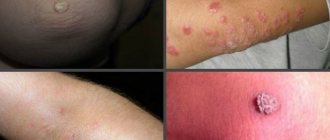Surgeon
Bohyan
Tigran Surenovich
Experience 37 years
Surgeon of the highest category, Doctor of Medical Sciences, member of the International Association of Surgeons, Gastroenterologists and Oncologists
Make an appointment
Lipoma (fat) is a benign formation in the form of small nodules, the appearance of which is associated with the accumulation and compaction of excess adipose tissue. The size of the lipoma may increase or remain stable. When exposed to unfavorable factors, pockets of pathogenic microflora can form inside the wen, which makes it a source of other serious diseases of internal organs. The unaesthetic appearance of formations protruding on the surface of the skin is also important. Therefore, in most cases, a decision is made to remove the tumor and its subsequent histological examination to clarify the nature of the wen - benign or malignant.
The area of localization of lipoma is the back, chest, face, limbs, mammary glands, structure of internal organs. The formation can be detected accidentally during diagnostic procedures or during palpation. The edges of the lipoma are dense and clear, the formation is mobile, and its palpation is painless. It is more difficult to detect a lipoma in the tissues of internal organs. However, it is precisely such cases that are recognized as the most dangerous, threatening disruptions in the functioning of the affected tissue area.
Classification
Depending on the internal structure there are:
- Myolipomas are formations from muscle cells.
- Angiolipomas are lipomas with the inclusion of blood vessels.
- Myxolipomas are tumors containing mucus.
- Fibrolipomas are formations containing connective tissue.
It is possible to accurately determine the nature of the formation only after a thorough diagnosis. It should not be postponed for the foreseeable future, especially if the lipoma quickly increases in size and causes discomfort.
Why choose laser removal?
There are many reasons:
- After laser treatment, the wen disappears without a trace. There will be no small wounds left, and you won’t have to hide your face.
- No risks are expected. The wen simply “melts.” The surgical method is much riskier.
- After removal, you can go to work, apply makeup, swim - in a word, lead a normal life. There is no and cannot be a rehabilitation period.
- It is cheap. The laser method cannot be expensive. The price is determined by the cost and speed of the procedure, and this is truly the cheapest and fastest way to remove fatty tissue, no matter how much they try to make money on it.
Causes of lipoma
The general pattern of the appearance of wen is the accumulation of fat cells due to a violation of fat metabolism in the body. If measures to treat the problem are not taken in a timely manner, the formation quickly grows, pinching nearby muscles and blood vessels. Among the causes of lipoma that influence the unfavorable course of the pathology, it is worth noting:
- Hormonal disorders, a period of hormonal changes in the body.
- Metabolic failures.
- Disturbances in the diet with a predominance of food of animal origin.
- Diseases of the kidneys and liver, pancreas and thyroid gland.
- Bad habits.
- Diabetes.
- Genetic predisposition.
Also, the formation of excess adipose tissue is affected by physical inactivity, a sedentary lifestyle and refusal of full-fledged physical activity.
Symptoms
The main localization of wen is the place of deposition of adipose tissue. At first it is a soft compaction, which gradually increases in size. The only symptom of a lipoma is the formation of a noticeable tubercle with a movable structure, which can be felt when pressed. There is no pain when palpating the lipoma on the back or arms.
If the wen is localized in the structure or on the surface of internal organs, disturbances in their functioning may indicate pathology. The disease is also accompanied by characteristic symptoms:
- a lipoma in the esophagus causes coughing, nausea and vomiting;
- formations on the bronchi and trachea cause a constant dry cough of a paroxysmal nature;
- lipoma on tendons and cartilage limits their mobility and causes pain;
- a lump in the mammary gland gives pain;
- fatty deposits in the kidneys provoke colic, lower back pain, and increased blood pressure;
- a lipoma in the head causes dizziness and headaches;
- a formation in the neck makes it difficult to swallow food and also causes hoarseness;
- A lipoma in the heart area causes arrhythmia and heart failure.
Are you experiencing lipoma symptoms?
Only a doctor can accurately diagnose the disease. Don't delay your consultation - call
Symptoms of the disease
Unlike most other tumors, lipoma grows and develops quite slowly, causing virtually no inconvenience to the carrier. Patients seek its removal mainly for two reasons:
- The lipoma appears on an open area of skin and does not look aesthetically pleasing.
- The tumor has formed in the immediate vicinity of the nerve endings and, as it grows, begins to put pressure on them.
It is also not uncommon for the skin over the lipoma to become damaged and the wound to become infected. When inflammatory processes are added to the tumor, the patient may note:
- Decreased mobility and functionality of the affected area.
- Minor pain.
- Increased body temperature.
- Redness of the skin.
- Inflammation in the area where the skin has been damaged.
- Local (depending on the location of the tumor) manifestations: wheezing and difficulty swallowing - in the neck, arrhythmia - if the heart is affected, dizziness and migraine if the lipoma is located near the vessels of the head.
In this case, pathology can already cause problems, and considerable ones. You should consult a doctor as soon as you discover that:
- The tumor became denser and its growth rate noticeably accelerated.
- The lipoma appeared on the face or on any other open, and therefore least protected, area of the skin.
- The tumor has formed in a high-friction zone, where it can easily be damaged.
- The lump turned red, began to cause discomfort, began to bleed and/or discharge pus.
Methods for diagnosing lipomas
The long period of latent progression greatly complicates the diagnosis of soft tissue lipoma in the early stages of development. More often, pathology is detected when the wen reaches a size of 1.5-2 cm and is easily palpable under the skin. To carry out differentiated diagnostics and confirm the benign nature of the formation, you can:
- Blood tests to exclude viral or bacterial infections, as well as the absence of an inflammatory process.
- X-ray of the chest, limbs or abdomen. Allows you to detect a formation, clarify its location, calculate its size and assess the condition of surrounding tissues.
- Ultrasonography. It is used as an additional diagnostic method when the presence of a lipoma is confirmed by other examination methods.
- Computed and magnetic resonance imaging. Effective methods to determine the location and size of the lipoma, as well as confirm its benign nature.
- A biopsy of wen tissue to analyze it for the risk of cells degenerating into a malignant structure.
If the patient has other diseases of the internal organs, the diagnosis of lipoma is carried out taking into account their characteristics, and deciphering the results suggests the mutual influence of pathologies, making it possible to more accurately determine the cause of the appearance of the wen.
Removal of fatty tissues (lipomas and atheromas)
It is advisable to remove lipomas and atheromas. No ointments, lotions, compresses, onions/garlic will help - the wen will not resolve. But atheroma can become inflamed.
Based on size, condition and location, atheromas are removed in one of the following ways:
- By radio waves. Removal of atheroma using radio waves is carried out under local anesthesia. The intervention consists of opening the capsule, extracting the contents and coagulating the atheroma. Scars after the radio wave technique are minimal. In this way, formations up to 7 mm are removed.
- Surgical intervention. Surgical removal of atheroma is the most common method. A thin incision is made along the upper part of the atheroma and the contents of the capsule are removed. Thus, the incision is significantly smaller than the original diameter of the wen. The sutures are removed after 3-12 days (depending on the location of the intervention).
- The incision of the atheroma is carried out only when the inflammatory process has developed due to the need for cleaning and removal of purulent contents. The intervention is performed under local anesthesia, but the patient may experience discomfort. Sometimes, after the inflammation has resolved, a second operation is required to completely remove the capsule.
Any atheromas should be removed immediately after their appearance - a delay leads to additional problems. You shouldn't try to squeeze out the contents - it's not a pimple. The doctor determines whether to remove or observe the lipoma. Tactics depend on many factors:
- lipoma size;
- number of tumors;
- personal and family history of skin cancer;
- lipoma pain;
- aesthetic component.
The most common treatment for lipoma is surgical removal. The operation is relevant for large lipomas that continue to grow. The radio wave method is suitable for getting rid of small lipomas. Another treatment option is liposuction (puncture-aspiration method). The fat is “suctioned out” using a needle. If a wen forms on any part of the body, you should consult a surgeon. To get rid of fatty deposits - lipomas or atheromas - contact the surgeons of the President-Med medical centers
Treatment
If small lipomas are detected in a patient, a wait-and-see approach is chosen, which involves ultrasound monitoring several times a year. However, there are often cases when the doctor decides in favor of surgical intervention. Surgery is necessary if:
- The tumor grows rapidly, engulfing neighboring tissues and blood vessels.
- The lipoma rises above the surface of the skin, giving an unaesthetic cosmetic effect.
- The development of a wen gives persistent pain.
- Due to the growth of adipose tissue, the functioning of internal organs and the circulatory system is disrupted.
Removing or destroying a lipoma on the neck or back is possible in the following ways:
- Endoscopic method. It involves removing the tumor along with the capsule through a small incision in the skin.
- Liposuction is the extraction of adipose tissue by softening it and stretching it through a thin needle. Does not leave scars and does not injure the skin.
- Excision of a lipoma is the removal of a wen during a classic surgical intervention.
The optimal method is selected taking into account the general condition of the patient and the size of the lipoma.
What is atheroma?
Atheroma is a cyst of the sebaceous gland that occurs when its duct is blocked. Sebum cannot come out and accumulates inside, it stretches the gland, and it turns into a cystic cavity. This can happen for a variety of reasons, often due to trauma to the skin.
Atheromas most often occur where there is a lot of hair and sebaceous glands: atheromas on the scalp, face, neck, back, genitals.
In its manifestations, atheroma resembles a lipoma: it is also a “bump” that is located under the skin, does not cause pain and easily moves when pressed. But there is one characteristic sign: usually there is a hole in the skin in the area of atheroma through which contents with an unpleasant odor are periodically released. Inside the atheroma there is a substance that resembles cottage cheese or paste in consistency.
Atheroma is a benign formation. It's not cancer. The only thing that is dangerous about it is the possibility of suppuration. An infected and inflamed “bump” swells, turns red, and becomes painful. Sometimes it opens and pus comes out along with fat.
Atheromas can degenerate into malignant tumors, but this happens very rarely.
Diagnosis and treatment of lipoma at the JSC Meditsina clinic in Moscow
The clinic of JSC "Medicine" in the Central Administrative District of Moscow is ready to offer professional assistance to patients with suspected single or multiple cases of lipoma development. The center’s specialists have high-quality equipment and extensive practical experience in using various methods of removing a tumor focus. Each patient is guaranteed attentive attention, referral to a full course of examinations and an individual approach to developing lipoma treatment tactics. Appointments are available on the clinic’s website and by calling the numbers provided.
Alternative methods for removing lipomas
The surgical method for removing a lipoma is used, as mentioned above, if it is of significant size. As a result of the operation, a barely noticeable light trace remains; to avoid it, it is better to remove the tumor while it is small and you can use laser or radio wave removal.
Laser therapy is one of the modern and highly effective methods. It is used to remove small and medium-sized subcutaneous wen and is performed under local anesthesia. With this method of lipoma removal, the tissues surrounding it are practically not affected. As a result, healing after a course of laser therapy occurs much faster, and cosmetic defects are practically eliminated. Each of them is removed, literally, pointwise and without a trace, leaving no scars, even barely noticeable ones, and, in general, without affecting the surrounding tissues.
Treatment of lipomas on the face can be carried out using the most advanced method to date - using the Surgitron radio wave radiosurgical device. This method has proven itself to be excellent for removing small subcutaneous wen on the face. One of its main advantages, undoubtedly, is the fact that with its use there are practically no relapses. Using this method, lipomas are removed painlessly and bloodlessly; no rehabilitation period is required.
Specialists at the Center for Oral and Maxillofacial Surgery and Implantology recommend that if any neoplasms are detected on the face, even something as harmless as wen, you immediately consult a doctor in order to carry out the full range of measures to remove them as quickly and efficiently as possible.










